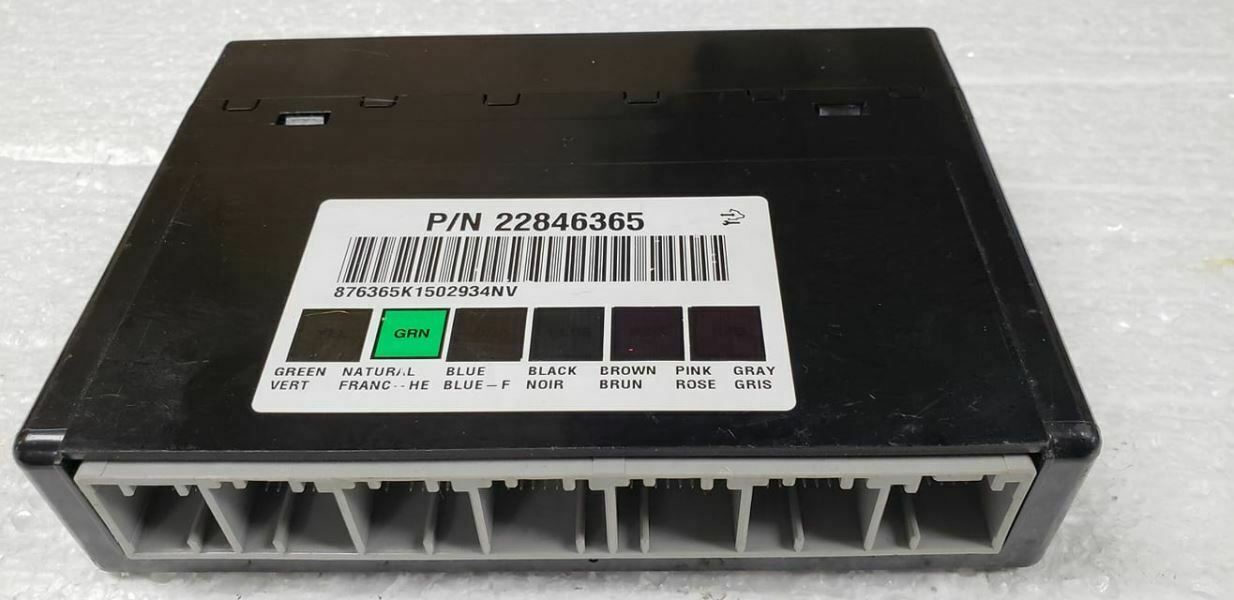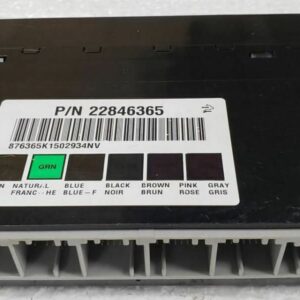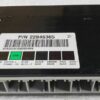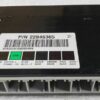If you’re dealing with bizarre electrical issues in your GM truck or SUV, you’re not alone. As a technician with over two decades of experience, I’ve seen it all: lights flickering for no reason, power windows with a mind of their own, or a battery that’s dead every morning. More often than not, the culprit is a failing Body Control Module (BCM). This isn’t just a simple fuse box; it’s the central computer for your vehicle’s body electronics, managing everything from your interior lights and power locks to the security system. When it starts to fail, it can cause a cascade of frustrating and hard-to-diagnose problems.
This replacement BCM is the definitive, hassle-free solution. We take the guesswork and expensive dealership trips out of the equation. Before we ship it, we program the module with the latest GM software, specifically matched to your vehicle’s VIN. This means it arrives ready for installation, designed to restore the factory functionality you’ve been missing. Don’t let electrical gremlins keep your truck off the road. This is the reliable fix you need to get everything working correctly again.
A Technician’s Notebook: The Case of the Randomly Dead Battery
A customer brought in his 2013 Silverado 2500, completely fed up. He’d replaced the battery twice and the alternator once, but his truck would still be dead some mornings. There were no codes, and everything seemed to work fine when it was running. I performed a parasitic draw test and found a significant draw—something was staying on after the key was off. After methodically pulling fuses, the draw disappeared when I pulled the BCM fuse. The faulty BCM wasn’t letting all the vehicle’s systems go to ‘sleep,’ slowly draining the battery overnight. Installing a new, properly programmed BCM fixed the issue for good. It’s a classic example of how a failing 2012-2014 Sierra 3500 BCM can cause problems that seem unrelated at first glance.
Is Your GM Truck Exhibiting These Symptoms?
A faulty BCM can manifest in numerous ways. If you’re experiencing any of the following, this module is likely the solution:
- ✔ Intermittent or non-working power windows, door locks, or mirrors.
- ✔ Flickering or inoperative interior or exterior lights (headlights, tail lights).
- ✔ The security system acting erratically or preventing the vehicle from starting.
- ✔ Unexplained battery drain that leaves you with a dead battery.
- ✔ Dashboard warning lights that come on and off without a clear cause.
- ✔ Communication error codes, such as U0140, U0155, or other U-codes, stored in other modules.
- ✔ Horn, radio, or climate control malfunctions.
A Straightforward Guide to Your BCM Installation
Replacing the BCM is a manageable job for a DIYer with basic tools. The module is typically located under the driver’s side of the dashboard, near the steering column.
- Safety First: Always disconnect the negative terminal from your vehicle’s battery before starting any electrical work.
- Access the Module: Remove any lower dash panels or trim necessary to gain clear access to the old BCM.
- Disconnect and Remove: Carefully unplug the electrical connectors from the module. They have locking tabs, so be gentle. Once disconnected, unbolt or unclip the old BCM and remove it from the vehicle.
- Install the New BCM: Mount your new, pre-programmed BCM in the same location and securely plug in all the electrical connectors. You should hear a ‘click’ as they lock into place.
- Reconnect and Test: Re-install any trim panels you removed. Reconnect the negative battery terminal. Start the vehicle and test all body functions—lights, windows, locks, etc.—to ensure proper operation.
- Perform Post-Install Procedures: In some cases, additional steps like an airbag system sync or brake pedal position relearn may be needed. See our FAQ for more details.
Verified Vehicle Compatibility
This Body Control Module is a direct-fit replacement for a wide range of GM trucks and SUVs. It is compatible with part numbers 22737275, 22846365, and 22846364. Please verify your vehicle is on the list below for guaranteed compatibility.
- Cadillac Escalade / ESV / EXT: 2012-2014
- Chevrolet Avalanche 1500: 2012-2013
- Chevrolet Silverado 1500 / 2500 / 3500: 2012-2014
- Chevrolet Suburban 1500 / 2500: 2012-2014
- Chevrolet Tahoe: 2012-2014
- GMC Sierra 1500 / 2500 / 3500 (incl. Denali): 2012-2014
- GMC Yukon / Yukon XL (incl. Denali): 2012-2014
Note: For some 2013 models, please verify the ID on your original module matches one of the compatible part numbers.
Frequently Asked Questions
Frequently Asked Questions
What does “VIN Programmed” mean for me?
It means we load your vehicle’s specific Vehicle Identification Number (VIN) and the latest GM software onto the module before shipping. This ensures the BCM communicates correctly with your truck’s other computers, saving you a trip to the dealership for expensive programming.
Are there any required steps after I install it?
In most cases, it’s plug-and-play. However, some vehicles may require a ‘Brake Pedal Position Relearn’ or an ‘Airbag System Sync’ if the airbag light comes on. These procedures may require a professional scan tool. Always consult a service manual for your specific model.
Do I need to send my old BCM back?
No. There is no core charge for this module. You can keep your original part.
How do I provide my VIN?
After you complete your purchase, you will need to send us your 17-digit VIN. We cannot program and ship your module without it. Please double-check it for accuracy to avoid delays.
Where is the BCM located on my 2012-2014 Sierra 3500?
The BCM is typically located under the driver’s side dashboard, attached to or near the steering column. You will likely need to remove the lower dash trim panel to access it.



